Posted in Discussions & more
List of places in The Wake by Paul Kingsnorth
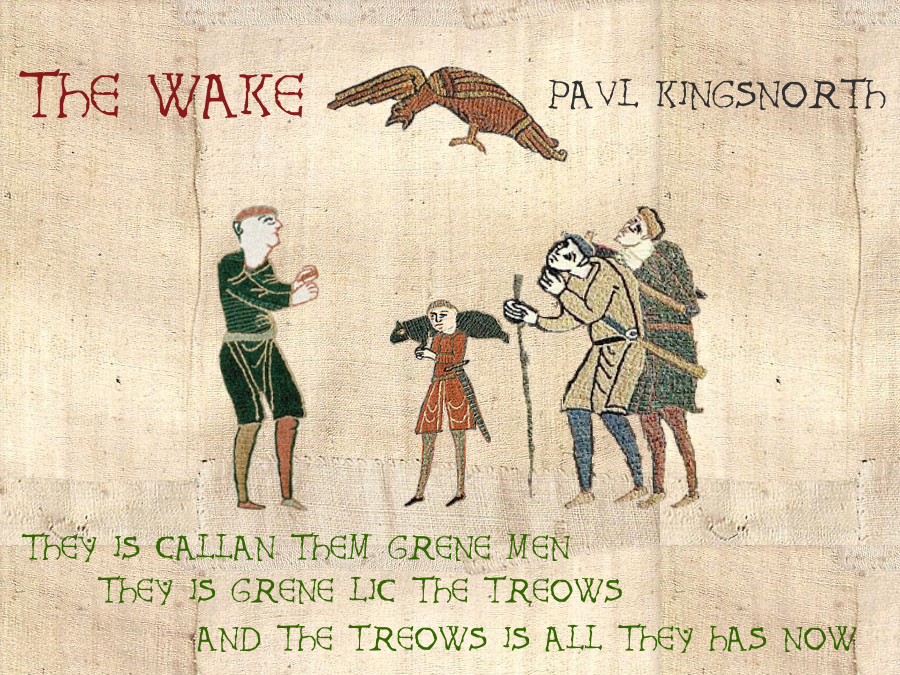
This article is a guide for readers of The Wake by Paul Kingsnorth.
The novel is written in a made-up language, and refers to places in medieval England, some of which don’t even exist now. To understand the world of The Wake better, I’ve been piecing it all in to this handy list.
List of places mentioned in The Wake:
| Place name in The Wake (A to C) | Real or modern name | Notes |
|---|---|---|
| Andredesweald (ac treows = oak trees) | This was a vast woodland area in south-east England. Today the area is known as ‘The Weald‘. Ashdown Forest is the largest remaining part of the forest. | In Old English Andredesweald means ‘the forest of Andred‘. |
| Bacstune | Baston, Lincolnshire. | Buccmaster’s ham is ‘ofer 3 miles of fenn to the circe at bacstune’. |
| Bohemia | The Duchy of Bohemia was a medieval country in central Europe. Today, Bohemia is the name of a region in the Czech Republic. | Buccmaster lists Bohemia as a place where people have heard of England’s defeat by the Normans, as if to say even in a land so far away everyone knows about it. |
| Blaec Duns ‘The great blaec duns what macs a line between mierce and the wealsc’ | The Black Mountains are a group of hills extending across the England-Wales border. | In Old English ‘beorg’ and ‘dun’ are words for ‘hill’. |
| Brunnesweald | A large area of forest in medieval England. 12th Century stories refer to Brunneswald or Bromswold, and this has been translated to mean the ‘Bourne Woods’. Today Bourne Woods, in Lincolnshire, is a remnant of the old forest. | In Middle High German ‘Brunne’ means ‘a spring of water’, and can refer to people or places with this name. Brunneswald is ‘The forest of Brunne’. |
| Creatas tun | Creeton, Lincolnshire. | – |
| Crugland | Crowland, Lincolnshire. The ‘abbodrice’ referred to in The Wake is Crowland Abbey, still present today. | The word ‘cruw’ is thought to mean a bend, perhaps in the River Welland which was visible before the fens were drained. |
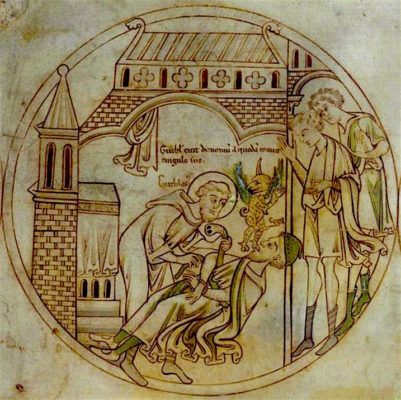
| Place name in The Wake (D – E) | Real or modern name | Notes |
|---|---|---|
| Danelaugh | The Danelaw. This is a term given to the part of England in which the Anglo-Saxons had been dominated by the Danes, mainly northern and eastern England. | Although in 1066 the Danes did not control the area, their social customs and legal codes were in use. |
| Durwins water | River Derwent. | I’m speculating that is what the author is referring to, because it seems too far away from Baston to be part of Buccmaster’s wapentake. |
| Earninga straet | Today called ‘Ermine Street’, this refers to a major Roman road that went from London to Lincoln and York. The road started as foot trails, was paved over by the Romans, and nowadays some modern roads still follow the old route. | The Old English name was ‘Earninga Straete’, supposedly named after a tribe called the Earningas who had inhabited the area before. This street made up part of the Great North Road connecting London to Scotland. |
| Eden | Garden of Eden from Christian mythology. | The gleoman in The Wake tells a version of Adam and Eve that includes creatures from Celtic and Norse folklore, such as ‘puca’ fairies. |
| Elge | Ely, Cambridgeshire. | The name Elge may have originally meant ‘island of eels’. It is a key location in the history and mythology of Hereward. At the time of 1066 Ely had an abbey, which the novel refers to. |
| Eorfic | York. | The name ‘York’ has a convoluted history, from the Anglian ‘Eoforwic’, and Old Norse ‘Jórvík’. |
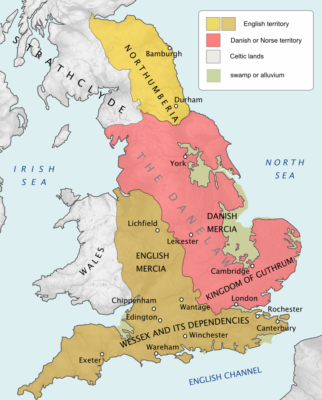
| Place name in The Wake (F – H) | Real or modern name | Notes |
|---|---|---|
| The fenns | The fens, or fenlands. An area of coastal marshland in eastern England. | The extent of the area has changed over time due to historical draining of the water. |
| Flanders | Flanders today is the Flemish region of Belgium. | Historically the area of Flanders has varied. |
| Friesland | Friesland, or Frisia, is a province of modern day Netherlands. | Friesland has its own language, and some people still speak a dialect of Low Saxon. |
| Gold of the geets | The Geats (sometimes called Goths) were a Germanic tribe living in what is now southern Sweden. | I included this on the list because I originally thought it was a region, instead of an ethnic group. The reference to gold may be due to mythology or reputation of the Geats being raiders. |
| Grantabrycg | Cambridge. | This settlement originally developed near the River Granta. Over time, the name Grantabridge transformed to Cambridge. The river itself then took on the name Cam. |
| Haestingas | Hastings, a town and area name on the south coast of England. | The name Haestingas is from an Anglo-Saxon tribe. The Battle of Hastings took place about 11km northwest. |
| Holland | This was a medieval subdivision in Lincolnshire. The name survives in the modern district of South Holland. | The word may mean forested land, ‘holt-land’. Similarity to the country name ‘Holland’ (Netherlands) is likely coincidental. |
| Huntenadun | Huntingdon, Cambridgeshire. | The name may mean ‘Hunter’s hill’. |
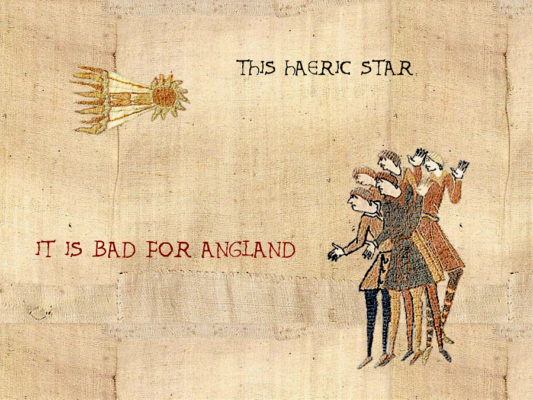
| Place name in The Wake (L – M) | Real or modern name | Notes |
|---|---|---|
| Langetof | Langtoft, Lincolnshire. | – |
| Lincylene | Lincoln. | – |
| Lundun | Paris. Im kidding, it’s London. | – |
| Maldon | Maldon is a town and district in England’s east. | It is known for the Battle of Maldon, at which an Anglo-Saxon army lost against Vikings. |
| Mierce | Mercia was a kingdom in the middle of Anglo-Saxon England. | – |
| Myrcwud | Mirkwood, a forest in old Germanic and Norse mythology. | Mentioned in the Poetic Edda. |
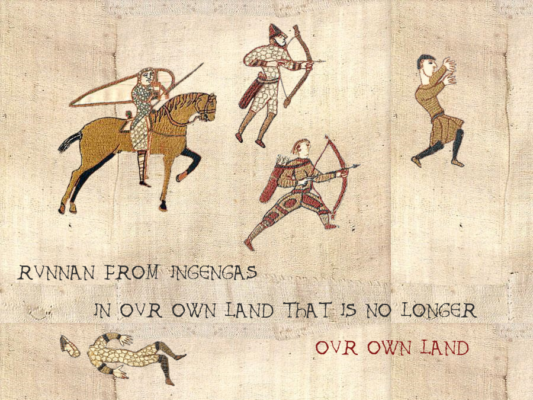
| Place name in The Wake (N – R) | Real or modern name | Notes |
|---|---|---|
| Northanhymbre | Northumbria This was a medieval Anglian kingdom in what is now northern England and southern Scotland. | The name derives from the Old English ‘North of the Humber”, the southern limit of the kingdom being the Humber Estuary. |
| Offerthun salt pans | Offerton, Manchester. | This area has a long history of salt production. |
| Petersburh | Peterborough, city in Cambridgeshire. | – |
| Rome | Rome! | – |
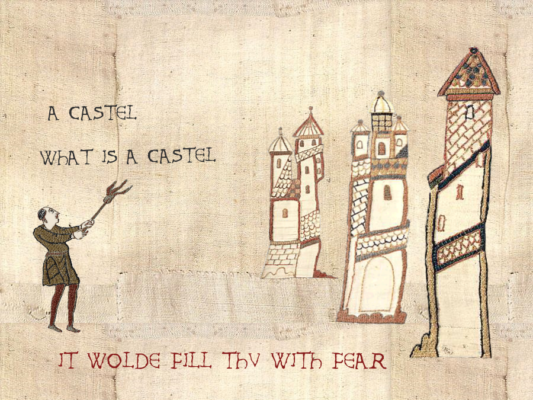
| Place name in The Wake (S) | Real or modern name | Notes |
|---|---|---|
| Sanlac | Senlac Hill. The town of Battle, East Sussex, is now here. | Location of the Battle of Hastings, where the Anglo-Saxons were defeated by the Normans. |
| Scaldemariland | ‘Scaldemariland’ is mentioned in medieval texts but the exact location is unknown. It may refer to islands in Scheldt River, which is in modern France, Belgium, and the Netherlands. | – |
| Scir lincylene | Lincolnshire. | – |
| Stam ford by eorfic | The modern village is known as Stamford Bridge, Yorkshire. | Location of the Battle of Stamford Bridge, where the English army defeated the Norwegians in 1066. |
| Stan ford | Stamford, Lincolnshire. (Not to be confused with Stamford, Yorkshire listed above). | The novel mentions ‘Stan ford’ and ‘Stan ford tun’ listed below. I’m not sure whether the this is differentiating between a village and a larger town with a fort, or if they are the same location. |
| Stan ford tun | Stamford, Lincolnshire. | See above. |

| Place name in The Wake (T – W) | Real or modern name | Notes |
|---|---|---|
| The Tees runs a deep dark ea that foams over the fells of the north | The River Tees in northern England. | High Force Waterfall is on the River Tees. |
| Wessex | Wessex was an Anglo-Saxon kingdom in the south of England. | The novel refers to the land of the ‘golden wyrm’. A gold wyvern is a type of dragon that was a symbol of medieval Wessex. |
| West wealas | West Wales, or Cornwall. | – |
| White cliffs in the south | White Cliffs of Dover. | – |
| Wulfdale | Wolfdale, or Ulfdal. A mythical location from Norse mythology. | Mentioned in the Poetic Edda. |
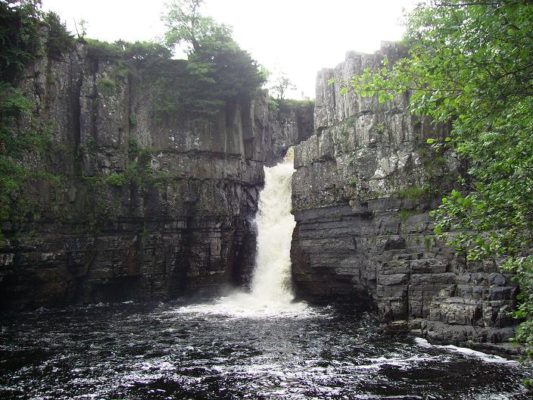
The novel also has vague references to the ‘land of the scots’, ‘ys lands of the denes’, and the Middle East and North Africa as ‘hot lands’, ‘lands to the east with no night’, and ‘land of dust’ which I have omitted from the list.
Although well researched, it should be remembered that The Wake is a novel and isn’t intended to be historically accurate.
(Create your own Bayeux Tapestry)
Wendi A Dunlap
Excellent work!
Tia
Thank you Wendi! 🙂